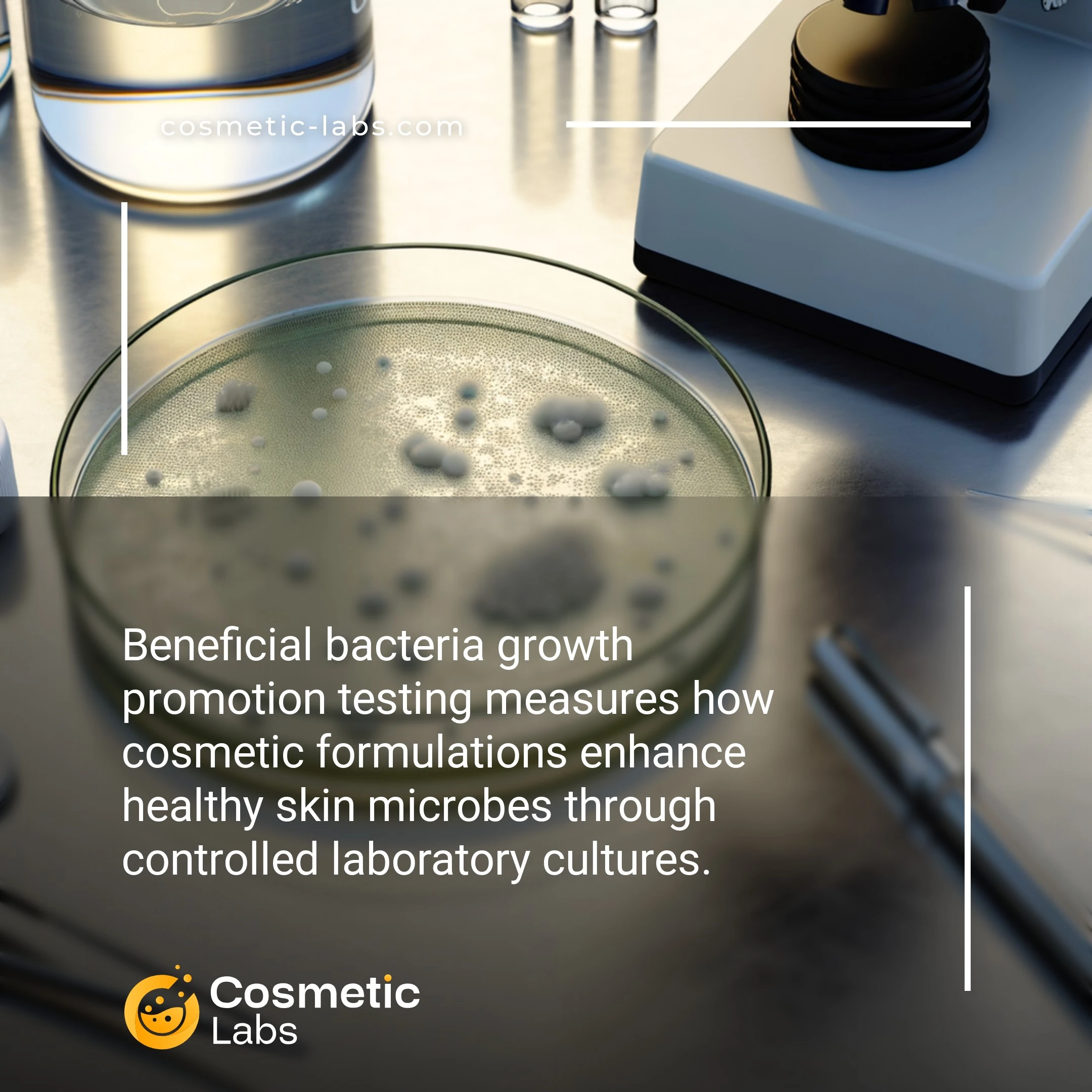Beneficial Bacteria Growth Testing for Cosmetic Products

What is Beneficial bacteria growth promotion testing?
Beneficial bacteria growth promotion testing services evaluate how cosmetic formulations support healthy skin microbiome development through laboratory analysis of bacterial proliferation rates. Labs measure specific probiotic strains like Lactobacillus and Bifidobacterium growth in controlled environments, testing ingredient combinations at various concentrations over 24-72 hour periods. This quantitative approach reveals which formulations actively nourish beneficial microorganisms rather than simply avoiding harm, giving brands scientific data to support microbiome-friendly product claims.
Why do you need this service?
Cosmetic brands use prebiotic ingredient validation testing to prove their skincare formulations actually feed beneficial skin bacteria like Lactobacillus and Bifidobacterium strains. Labs measure bacterial colony growth rates and metabolic activity to generate clinical data for marketing claims about microbiome-friendly products, helping you substantiate “supports healthy skin flora” statements that resonate with today’s microbiome-conscious consumers.
Who provides Beneficial bacteria growth promotion testing services?
All cosmetic labs providing Beneficial bacteria growth promotion testing services
There is no company providing these services at the moment.
Prebiotic Efficacy Testing Services
Prebiotic efficacy testing validates how well your cosmetic ingredients support beneficial skin bacteria growth. These specialized assays measure microbial stimulation rates and selective feeding patterns to prove your product’s microbiome-supporting claims.
Growth Stimulation Analysis
Labs culture specific beneficial bacteria strains like Lactobacillus and Bifidobacterium with your test ingredients. The process tracks colony formation rates, metabolic activity, and population density changes over 24-72 hour periods.
Testing protocols include:
- Dose-response curves for ingredient concentrations
- Comparative analysis against established prebiotics
- pH and temperature stability assessments
- Antimicrobial selectivity screening
Results show percentage growth increases and minimum effective concentrations for formulation guidance.
Selective Feeding Verification
These tests confirm your ingredients preferentially nourish good bacteria while limiting pathogenic growth. Labs run competitive inhibition assays using mixed bacterial cultures that mirror natural skin environments.
The testing measures metabolite production, substrate utilization rates, and bacterial population shifts. Labs typically test against common skin pathogens like Staphylococcus aureus and Propionibacterium acnes alongside beneficial species.
Data supports marketing claims about microbiome balance and provides regulatory documentation for product registration. Contact labs on our platform to discuss your prebiotic testing requirements and timeline.
Applications of Beneficial Bacteria Growth Promotion Testing
Beauty brands use beneficial bacteria growth promotion testing services to validate claims about probiotic skincare products and microbiome-friendly formulations.
Probiotic Skincare Validation
Labs measure how formulations support beneficial bacterial strains like Lactobacillus and Bifidobacterium on skin surfaces. Testing protocols evaluate bacterial colony counts at 24, 48, and 72-hour intervals using standardized growth media. Brands developing probiotic serums, moisturizers, and cleansers rely on these assays to substantiate marketing claims about microbiome support.
Results typically show 15-40% increases in beneficial bacteria populations compared to control formulations. This data supports product positioning and regulatory submissions across multiple markets.
Prebiotic Ingredient Screening
Cosmetic labs test individual ingredients and complete formulations for their ability to selectively promote beneficial bacteria while inhibiting harmful species. Common prebiotics like inulin, oligosaccharides, and plant extracts undergo growth promotion assays using multi-strain bacterial panels.
Testing identifies optimal concentration ranges where ingredients show selective bacterial growth enhancement. Labs typically screen 5-8 concentration levels to establish dose-response relationships for formulation guidance.
| Testing Parameter | Measurement Method | Typical Timeline |
|---|---|---|
| Bacterial Growth Rate | Colony Forming Units (CFU) count | 24-96 hours |
| Selective Promotion | Species-specific media cultures | 48-120 hours |
| Metabolic Activity | pH monitoring and metabolite analysis | 72-168 hours |
| Biofilm Formation | Microscopy and biomass quantification | 96-240 hours |
Ready to validate your microbiome-friendly formulations? Connect with experienced cosmetic labs on our platform to discuss your beneficial bacteria testing requirements and timeline.
